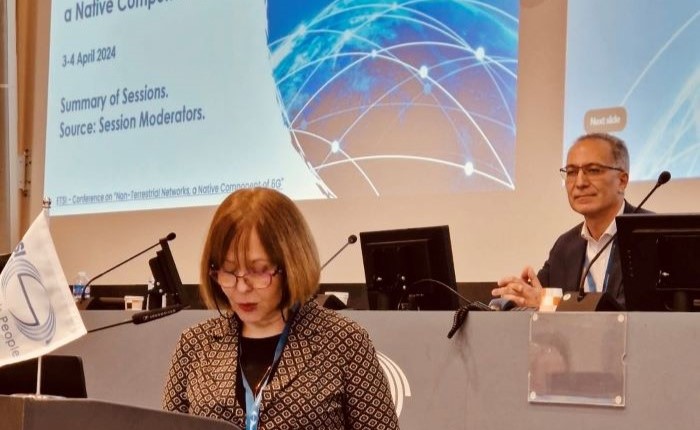
The European Space Agency’s (ESA) Space for 5G/6G Programme Office co-organised the first ETSI Conference, which focused on how Non-Terrestrial Networks (NTNs) will natively integrate with Terrestrial Networks (TN) in 6G and play a key role in the adoption and utilisation of 6G on a global scale, has culminated in a success with dialogues underway to ensure open and robust and standards for globally leading 5G – and soon 6G – connectivity ecosystem. The Conference was co-organised with the European Telecommunications Standards Institute (ETSI), the 6G Smart Networks and Services Industry Association (6G-IA) and the Smart Networks and Services Joint Undertaking (SNS JU).
The goal to drive stronger, reliable and secure connectivity brought together over 200 participants to the Conference from 25 countries, representing industries from mobile, satellite and space sectors as well as number of market verticals. The Conference provided a platform for discussion on how these sectors can continue to collaborate to connect the unconnected, and how NTNs can complement existing TNs to provide the capability to unlock societal and economic opportunities for 5G, 5G Advanced and 6G.
ESA has been heavily involved in the 3rd Generation Partnership Project (3GPP) to engage satellite industry in the NTN standardisation process and development, to drive sustainable and resilient connectivity solutions, stimulating technological and investment frameworks. This work enables the alignment of satellite, space, terrestrial and vertical sectors to meet the needs of end users, adapting these solutions as requirements evolve. To meet these needs, standardisation is at the core of creating an aligned and coordinated approach to ensure a competitive NTN ecosystem.
ESA's Directorate of Connectivity and Secure Communications (CSC) has worked hand-in-hand with our industrial partners through a selection of ESA devised projects such as HELENA, 5GIS, 5GEOSiS, 6GSmartSAT, TS-SDN-SMO, 5G GEO, 5G LEO and AICOMS. The development of these projects across the ecosystem are enabling an aligned approach to provide a stronger go-to-market approach, coupled with more advanced and technologically sound products and systems.
A panel was moderated by Maria Guta of the CSC Directorate – where the Space for 5G/6G programme line is based within the Advanced Research in Telecommunications Systems (ARTES). Stefano Cioni, who is part of the Technology, Engineering and Quality Directorate supports the 5G/6G team also moderated a panel session, while Florin Grec of the Navigation Directorate presented to participants. The cross-directorate participation demonstrated ESA’s commitment to playing a key role in showing how the Agency is providing space solutions from across various domains to implement 6G for our societies.

Antonio Franchi, Head of the 5G/6G NTN Programme Office said: “Working with our partners, it’s clear the role ESA and standardisation has to play in facilitating a more competitive and agile NTN ecosystem, to deliver more resilient and stronger connectivity to our society and for businesses.”
Maria Guta, Senior 5G/6G Satellite Solutions Architect, said: “ESA is helping bring together terrestrial, satellite, and vertical actors to provide the best sustainable and secure NTN solutions for our society and economy.”
Stefano Cioni, Telecommunication Systems Engineer, said: “Through the Space for 5G/6G programme research and development projects with industry, ESA is enabling Europe to maintain technological leadership and unlock opportunities now through 5G and looking to future 5G Advanced and 6G deployment.”
You can find out more about the ETSI conference through the press release.
The Space for 5G/6G programme line demonstrates the essential nature of hybrid TN/NTN for 5G and 6G, working with industrial and academic partners, and ESA Member States to set the standardisation, development and deployment roadmaps to enable natively integrated and interoperable TN/NTN in 5G/6G.




